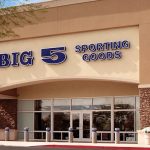Nautilus, Inc. reported sales jumped 5.8 percent in the first quarter to
$48.3 million from $45.6 million a year ago. The fitness giant earned
$1.6 million, or 5 cents a share, in the period against a loss of $7.8
million, or 25 cents cents, a year ago.
Direct Channel:
Total sales in the company’s direct channel in the first quarter of 2011
were $30.3 million, an increase of 6.1% from sales of $28.5 million in
the comparable 2010 period. Continuing the sales trends in recent
quarters, direct channel sales of the company’s cardio products in the
first quarter of 2011 increased by 24.0% or $4.0 million, over the first
quarter of 2010, primarily due to increased sales of its proprietary
Bowflex® TreadClimber® cardio product line. The increase in cardio sales
reflects strong product offerings, improved consumer credit
availability, and the company’s new creative media, which resulted in a
decrease in cost-per-lead. As anticipated, improved cardio sales offset
sales declines of the company’s legacy strength oriented products,
including Bowflex rod-based home gyms, which fell 19.3% or $2.3 million
in the first quarter of 2011 compared to the first quarter of 2010. For
the first quarter of 2011, cardio sales represented approximately 69% of
total direct channel sales versus approximately 59% in the first
quarter of 2010. As previously announced, the Company will continue to
focus more of its advertising efforts around the Bowflex® TreadClimber®
product line to gain greater consumer awareness of the product with the
goal of increasing market share in the cardio oriented fitness market,
which the company believes to be several times larger than the strength
market. Based on year-to-date trends, the company anticipates that
increases in cardio sales should more than offset continued future sales
declines of the company’s legacy strength oriented products in 2011.
Sales in the first quarter of 2011 were also favorably impacted by the
company’s new consumer financing programs, including its program with
Tier I credit provider, GE Money Bank, which was implemented in
September 2010. During most of 2010, the company experienced
significantly reduced credit approval rates from its previous consumer
financing source from levels typically attained in prior years. Total
credit approvals from the company’s primary and secondary financing
sources averaged approximately 21% of applications processed in the
United States in the first quarter of 2011, compared to approximately
13% in the first quarter of 2010. Credit approval rates in the first
quarter of 2011 were favorably impacted from the introduction of
expanded secondary consumer finance programs.
Retail Channel:
Total sales of the Company’s retail channel in the first quarter of 2011
were $17.0 million, a 6.5% increase from $15.9 million in the
comparable 2010 period. Retail channel sales of the Company’s elliptical
machines and SelectTech® products were particularly strong. Sales to
the Company’s internet-based customers helped increase total retail
channel revenue in the first quarter of 2011 compared to the same period
last year.
Consolidated gross profit margin in the first quarter of 2011 was 45.7%
of net sales, compared to 50.3% for the same period in 2010. Gross
profit margin in the direct business was 56.3% for the first quarter of
2011, compared to 61.5% for the same period in 2010, primarily due to
changes in product mix and higher outbound freight costs. Gross profit
margin in the retail business was 23.4% for the first quarter of 2011,
as compared to 26.5% in the first quarter of 2010, due to higher costs
for SelectTech® products and increased freight expenses.
Operating expenses in the first quarter of 2011 totaled $20.3 million,
compared to $24.9 million for the same period in 2010. These lower
operating expenses reflect the company’s ability to leverage fixed costs
across higher sales volumes, as well as more cost effective advertising
expenditures. The company allocated a significantly greater portion of
its television and online advertising budget toward the Bowflex®
TreadClimber® product line during the first quarter of 2011 and expects
to continue to direct the majority of such expenditures to this product
line during the remainder of the year. In addition, the Company began
implementing a lower cost internet-based advertising strategy for its
home gyms, which are expected to capitalize on the extensive product
awareness that currently exists for Bowflex® rod-based home gyms.
Net income for the quarter ended March 31, 2011 was $1.6 million, or
$0.05 per share. Included in net income is income from continuing
operations, net of tax, of $1.1 million, or $0.04 per share, and income
from discontinued operations of $0.5 million, or $0.01 per share. Net
loss for the quarter ended March 31, 2010, was $7.8 million, or a loss
of $0.25 per share. In the first quarter of 2010, loss from continuing
operations was $2.4 million, or a loss of $0.08 per share, and loss from
discontinued operations was $5.4 million, or a loss of $0.17 per share.
As of March 31, 2011, the company had cash and cash equivalents of $16.6
million, compared to $14.3 million at December 31, 2010.
Edward Bramson, Chairman and Chief Executive Officer of Nautilus, Inc.,
stated, “Our first quarter financial performance reflects the
improvements that we are making across the board with our business, and
we are pleased to have achieved net income from continuing operations
for the second consecutive quarter. For both our retail and direct
segments, we grew our top line and delivered operating profits,
reflecting strong sales of our cardio products and improved coverage of
fixed costs. Notably, we improved the efficiency of our sales and
marketing spending by allocating the majority of our television and
online advertising budget to cardio products, as well as by improving
the creative content of our ads. Looking to the remainder of 2011, we
will continue to focus on executing our strategy to reposition Nautilus
with a dominant emphasis toward cardio-based products, which represents
the largest segment of the fitness market. While focusing on driving
increased sales compared to prior year, we also recognize it is
important to continue to diligently manage our operating expenses across
our business to ensure that we remain well-positioned to improve
year-over-year profitability in coming quarters.”













